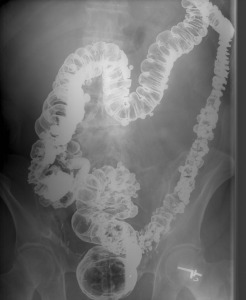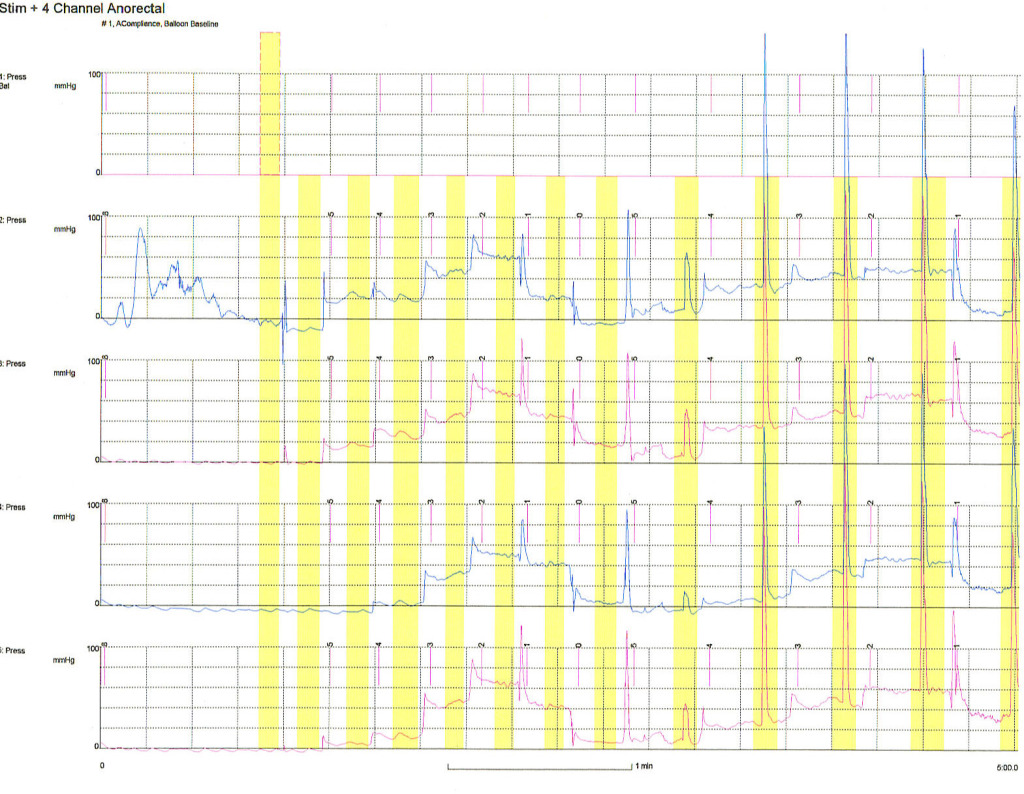Fecal Incontinence

Fecal incontinence
2.2% of population suffers from FI
Men with FI: 51.1% prevalence of urinary incontinence
Women with FI: 59.6% prevalence of urinary incontinence
Higher in institutionalized patients & 7% of those >65
56% prevalence on psychiatric wards
32% prevalence on geriatric wards
Cost $400 Million per year in USA in pads alone!
Definition
Fecal Incontinence (FI) is defined as either the involuntary passage or the inability to control the discharge of stool.
There are 3 subtypes of FI:
- Passive incontinence – The involuntary discharge of stool or gas without awareness
- Urge incontinence – The discharge of fecal matter in spite of active attempts to retain bowel contents
- Fecal seepage – The leakage of stool following otherwise normal evacuation
Another way to describe this is the inability to defer the urge to pass gas or stool to a socially acceptable time and place.
Other names for fecal incontinence:
- Bowel accidents
- Accidental bowel leakage
- Bowel incontinence
- Rectal discharge
- Loss of bowel control
- Anal leaking/leakage
- Anal incontinence
- Rectal leaking/leakage
Symptoms of Fecal Incontinence
- Bowel accidents
- Anal leakage
- Stained or soiled under garment
- Irritation around anus
- Accidental loss of gas or bowel contents
Statistics on Fecal Incontinence
The prevalence of FI is increased in the elderly. It is one of the most common reasons for entering a nursing home.
- 45% of nursing home residents have FI
- 10% to 15% in the more independent residents
- Up to 70% among the most dependent residents
FI affects 16% of non-institutionalized adults aged 70 years and older.
FI affects up to 19 million people in the United States (US)
Studies suggest that only 15%– 45% of FI patients seek treatment.
Consider the following statistics that support the claim that fecal incontinence is a hidden condition:
- For 84% of patients with FI, the physician was unaware of the patient’s disorder
- 54% of patients with FI had not discussed the problem with a professional
- 65% of patients with severe or major FI which had an impact on the quality of life wanted help with their symptoms
Mechanisms of Fecal Continence
Colonic factors
- Stool volume
- Stool consistency
Anorectal factors
- Capacity/compliance of rectum
- Anal seal of vascular cushions
Muscular factors
- Sphincteric/pelvic floor function
- Intact anal sphincter
Neurological factors
- Rectal sensation
- Normal mentation
- Intact innervation/reflexes
Causes of Fecal Incontinence
Problems with anal leakage are likely due to several causes. Treatment must be directed at multiple causes.
Labs/stool studies
Radiology
- Anal ultrasound
- Anal MRI
- Defecography
- Barium enema
- Peritoneography
Non-surgical Treatments of Fecal Incontinence
- Medicines
- Diet / fiber
- Stool softeners
- Physical therapy
Surgical Options to Treat Fecal Incontinence
There are now successful surgical options. There is no need to suffer any longer. Be open with your doctor about symptoms. Ask about seeing a specialist.
Surgical treatments may include:
- Sphincter Repair
- Sacral nerve stimulation
- Anal bulking agent injection
- Antegrade colonic enema
- Graciloplasty
- SECCA®
- Artificial sphincter
- Colostomy or diversion
Non-surgical Options to Treat Fecal Incontinence
- Enemas
- Biofeedback / physical therapy
- Medication adjustments
- Systemic disease treatment




